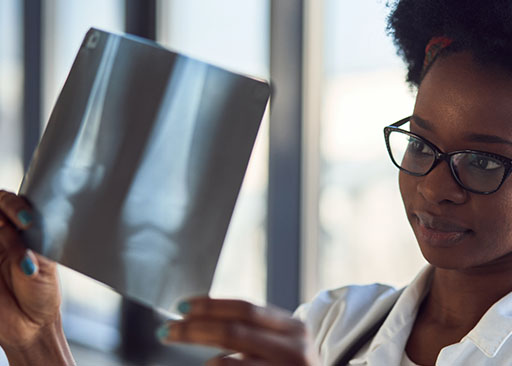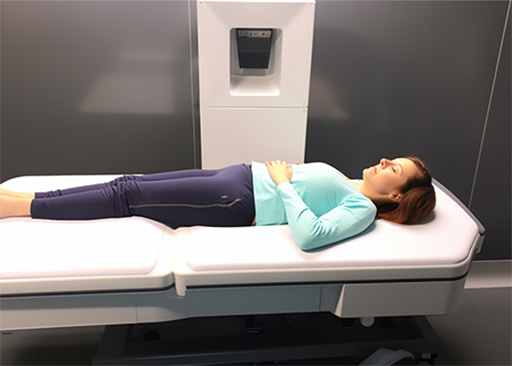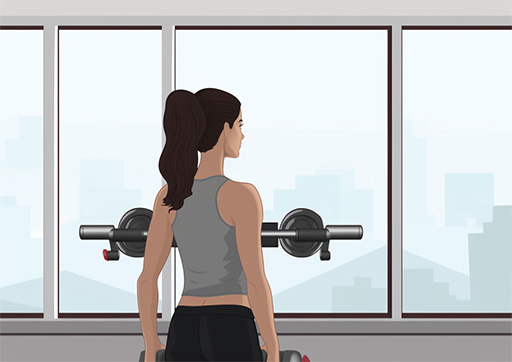Deep Diving Into Bone Mineral Density And Osteoporosis

If your patient has this condition, their bones tend to become weak and thin. In other words, they become more vulnerable to break. And since it’s a silent condition, you don’t experience any symptoms. Without taking a bone density test, you might not recognize you have osteoporosis until your bone breaks.
Bone densitometry is carried out through the dual-energy X-ray absorptiometry (DEXA) technique, in a single scan, as quickly as possible, minimizing the exam time.
Bone Densitometry
Bone densitometry is a modernized exam determining whether your patient has normal bone density, osteoporosis, or low bone mass. If you have low bone density values, the higher the likelihood of a bone fracture.
The bone mineral density (BMD) test is usually painless and quick. The test estimates how thick or dense your bones are by utilizing X-rays.
These X-rays measure the amount of calcium and minerals present in a part of your bone. If you have more minerals, the better. That means your bones are denser, stronger, and less likely to break. And if your mineral is low, the higher the likelihood of damaging your bone in a fall.
How To Determine Bone Mineral Density?
It is painless, safe, and non-invasive, with an extremely low radiation. The World Health Organization specifies that the exam must primarily be carried out on two parts of your body: the hip and the lumbar vertebra. The test might be performed on your forearm (distal radius).
During this exam, your they lie under a special scanner without needing to take off their clothes. The scanner usually moves along the whole body of your patient to capture an image of the interested area. The exam is quick and often lasts about 15 minutes.

Who Should Consider It?
Although osteoporosis is a health condition that primarily affects post-menopausal, it might also affect men to a lesser degree. As such, the specific exam is recommended for:
- Men over 70 years
- Women over 65 years
- Post-menopausal below 65 years with risk factors
- Menopausal with risk factor conditions
- People with BMI < 20
- People with a family history of parents with hip fracture
- Active smoking affects bone mineral density
How Is Bone Density Testing Used?
The exam is used to identify your risk of broken bones or fractures, measure bone mineral density before your bone breaks, assess osteoporosis, and monitor your osteoporosis.
If your bone mineral content is relatively higher, your bones are much denser. And if your bones are denser, the stronger they are and the less likely they’ll break.
Generally, bone density tests vary from bone scans. A bone scan needs an injection beforehand and is often used to detect infections, fractures, and other abnormalities in your bone.
And as aforementioned, osteoporosis is more common in older women, but young adult men can also develop the condition. Irrespective of your age or sex, your doctor might advise a bone density exam if you’ve:
- Lost height. Patients who have lost a minimum of 1.5 inches in height might have compression fractures inside their spines, and osteoporosis is one of the primary causes.
- Fractured a bone. In most cases, fragility fractures happen when there is bone loss such that it breaks more quickly than anticipated. A sneeze or strong cough may sometimes cause fragility fractures.
- Had a drop in hormones. Besides the natural drop in hormones that usually happens after menopause, the estrogen levels might also drop. Reduced sex hormone levels may lead to weakened bone health.
- Taken certain medications. Prolonged application of steroid medications interferes with your bone-rebuilding procedure, resulting in osteoporosis.
What Should You Expect?
The test usually examines the bones in your hip, forearm, and spine. These bones are more prone to breakage when you get osteoporosis.
Your patients will lie down on a uniquely designed padded platform while fully dressed when it comes to the test. A machine arm will pass above them, sending low-dose X-rays via their body. Once they pass through your bones, it creates an image of your skeleton. The test lasts approximately 10 minutes.
That image is issued to a professional who can read the results. It may take several days based on your doctor’s office.
Risks To Consider
Bone mass testing comes with its limitations, such as:
- Differences in testing methods. Although devices that measure the density value of the bones in the hip and spine are more accurate, they tend to be more expensive than devices that measure the density value of the peripheral bones of the finger, forearm, or heel. Price can become a factor when choosing medical equipment.
- Radiation exposure. While bone density testing utilizes X-rays, the amount of radiation exposure is often minimal. That said, pregnant ladies should avoid these tests.
- Past spinal complications. Test results might not be accurate in those with structural abnormalities inside their spines, e.g., severe arthritis, scoliosis, or previous spinal surgery conditions.
- Lack of information regarding the cause. While a bone density test may confirm that you have bone loss, it cannot tell you why. You’ll need a more comprehensive evaluation to answer that question.
- Limited insurance coverage. Not all health insurance plans cover bone density tests; it’s worth asking your insurance provider beforehand whether this test is covered.
- In case you’re taking medication for osteoporosis, you should expect to get bone densitometry every 1-2 years. You might not have osteoporosis, but your doctor might advise that you get testest every two years, particularly for females during or after menopause.
Final Thoughts

If you’re looking to increase your bone mineral density, you need to stress your bones and body by resistance training. The muscle attaches to bone, and lifting weights puts it under tension via muscle protein synthesis as it pulls on the bone, which forces the bone to be stronger.
Vitamin D and Calcium intake are also essential in developing and building density. You may get these nutrients by consuming nuts, dairy, green leafy vegetables, and getting outdoors in the sunshine for Vitamin D.
The BioScan system enables you to provide a value-added service to your patients with osteoporosis by equipping them with knowledge about their health. You can provide them with a simple, easy-to-understand report which they can refer to every day. Good health is easier to maintain when the patient takes accountability for their wellness.
